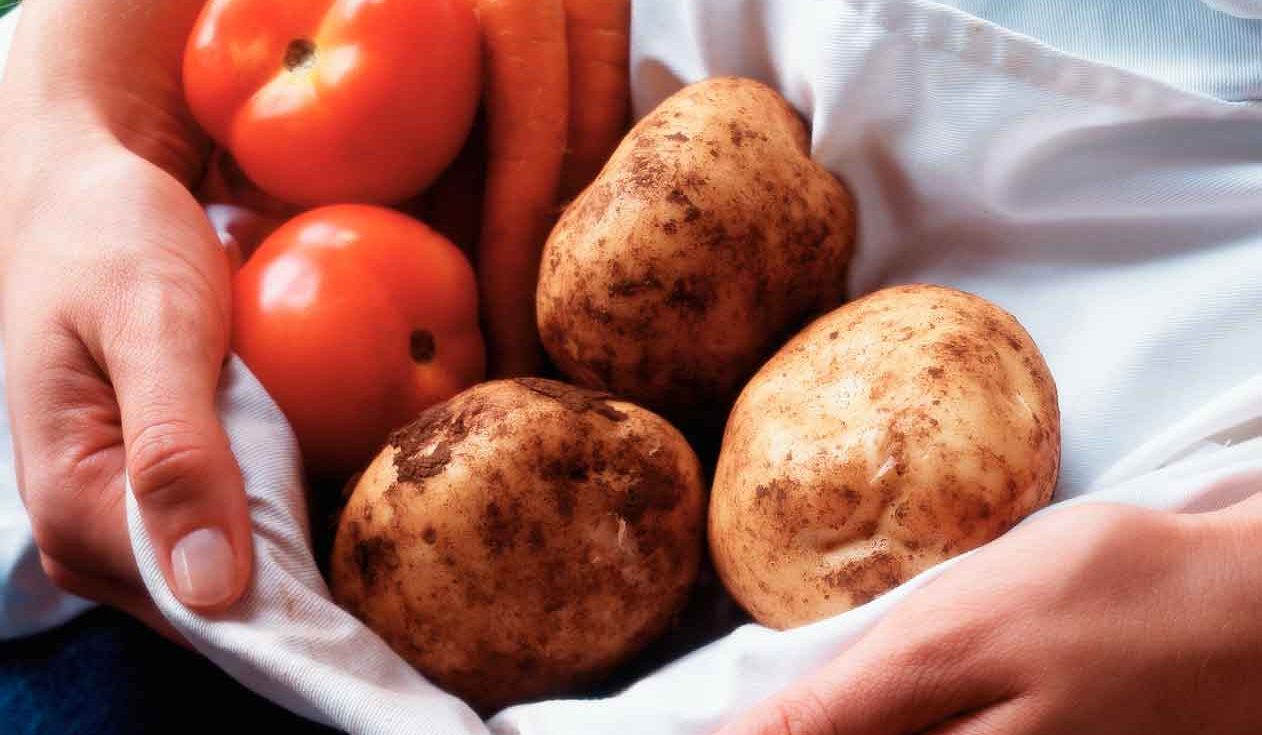Americans Make Poor Vegetable Choices

Americans eat a lot of potatoes and tomatoes. While those vegetables offer nutritional value, a variety beyond them would be much better for your health.
Visit any U.S. fast-food spot and you’ll see far more children (and adults) eating fries with ketchup than ordering a salad.
White potatoes are at the top spot in one survey on the list of vegetables American adults say they like most, followed by corn, garlic, carrots, tomatoes, green beans, and lettuce. Women and adults below 60 also like broccoli. Other surveys put corn in first place.
YOU MIGHT ALSO LIKE: Why Don’t Americans Eat More Fruits and Vegetables?
To meet that demand, the nation produces nearly 50 pounds of potatoes and more than 30 pounds of tomatoes per person a year. French fries and pizza sauce contribute to the high consumption of those two vegetables. For perspective, U.S. farmers grow more than nine pounds per person yearly of onions. After that, the numbers for other vegetables fall.
Bananas and apples are the nation’s most popular fresh fruit choices.
You might think that you can’t afford to serve fruit cup, salads, and stir fry recipes, especially to hungry men and teens.
That may not be true. Ideally, you could spend at least 40 percent of your food budget on fruit and vegetables. While produce may seem pricey, it’s important to know that frozen and canned vegetables are also nutritious. Mixing things up can cut costs and add variety.
Your household could probably meet the federal Dietary Guidelines for vegetable consumption and stay on budget, according to one study, if you bought fresh potatoes and kale and served frozen broccoli, for example.
People who eat vegetables live longer. Eating five servings a day of fruits and vegetables, compared to two servings, lowers your risk of dying from heart disease and a stroke by 12 percent and from cancer by 10 percent. That conclusion comes from a meta-analysis pooling dozens of studies that followed about two million people altogether for up to 30 years.
This isn’t to knock potatoes and tomatoes; they can be great for you.
One potato will meet about 20 percent of your daily need for vitamin C and potassium and 10 percent of your daily need for iron. It’s also a high-fiber food that will fill you up. Tomatoes are very high in vitamin C, contain fiber, and have antioxidants such as lycopene (the reason for the color).
But human beings need nutrients that are plentiful in other foods, such as dark greens (spinach, kale) and legumes (dry beans and peas, kidney beans, split peas, and lentils).
A variety of vegetables and fruits provide you with the nutrients that can reduce your chances of dying from a stroke or cancer.
Of course, potato chips, French fries, pizza, and ketchup aren’t the ideal ways to eat potatoes and tomatoes.
To wean your family away from frozen fries, try baking a potato and encouraging your kids to eat the skin. Serve your family raw tomatoes on salads or in salsa. For kids who love ketchup, try No-Sugar-Added versions, which have only a quarter of the sugar of regular ketchup. The sweetness will only come from tomatoes.
Bring your children to a farmers’ market and buy local produce in season, such as watermelon, pumpkins, and squash in the fall. Your choices will be fresher than store-bought foods. Experiment with buying something different every time you go to the grocery store. Try radishes, for example, or an exotic fruit that many stores carry now.
Don’t force things. A better strategy is to put novelties on your table and dress them up in ways you know your kids love. If they love creamy soups, make a butternut squash soup. Then try a creamy mushroom soup.
If they love tomato sauce on pasta, put onions, garlic, mushrooms, and green peppers in the sauce. Add a little anchovy for a richer taste, as if the sauce contained meat.
Melt your family’s favorite cheese on cauliflower or broccoli baked in the oven. Make a pesto with spinach and walnuts rather than the traditional, but more expensive, basil and pine nuts. Turn broccoli into a souffle with eggs, cheese, and some flour. Roast carrots.
If you collect a wide variety of recipes and experiment, you’re likely to find new vegetables or preparations to please each member of your family.
Updated:
November 21, 2023
Reviewed By:
Janet O’Dell, RN